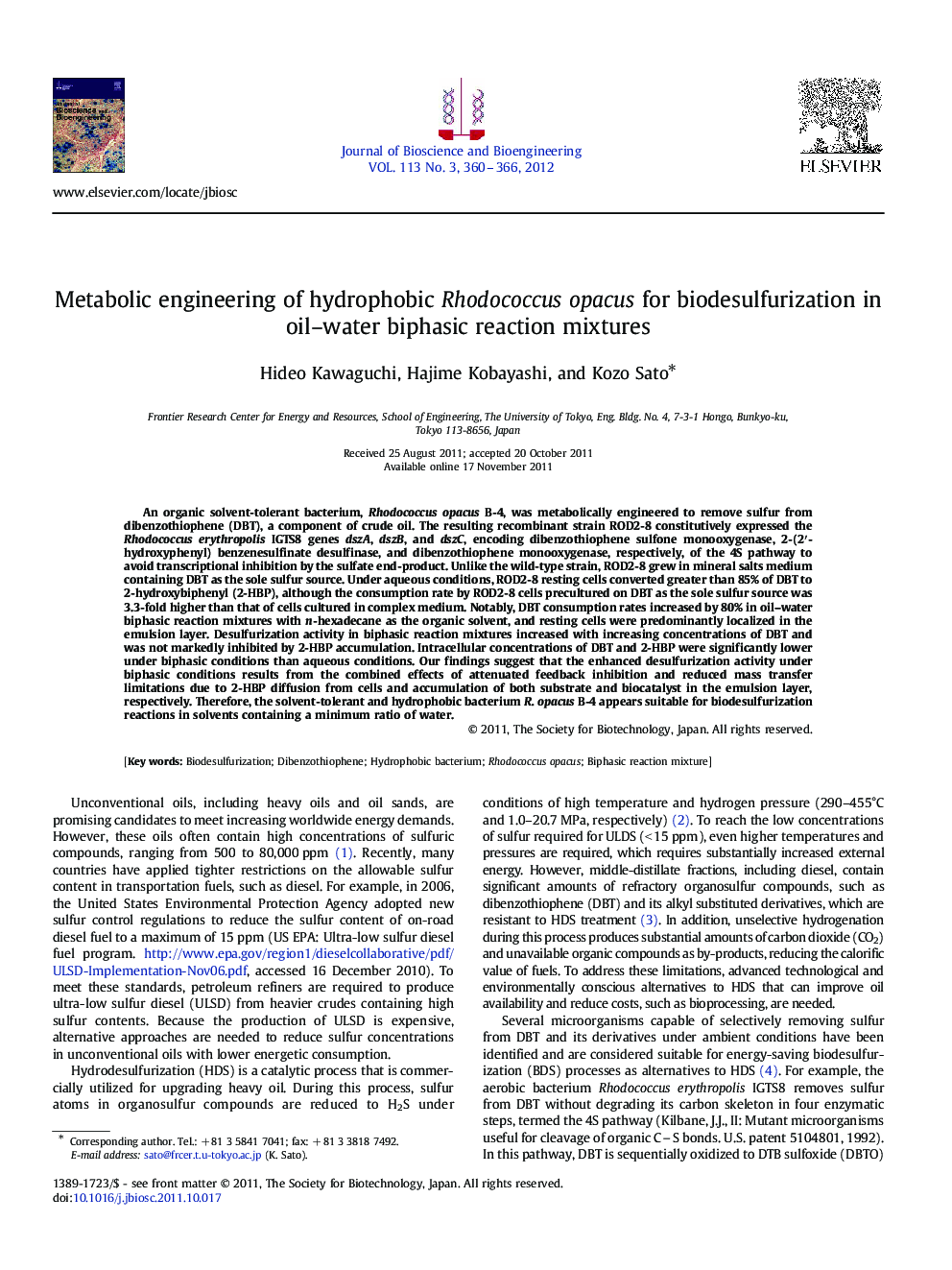| کد مقاله | کد نشریه | سال انتشار | مقاله انگلیسی | نسخه تمام متن |
|---|---|---|---|---|
| 21270 | 43214 | 2012 | 7 صفحه PDF | دانلود رایگان |

An organic solvent-tolerant bacterium, Rhodococcus opacus B-4, was metabolically engineered to remove sulfur from dibenzothiophene (DBT), a component of crude oil. The resulting recombinant strain ROD2-8 constitutively expressed the Rhodococcus erythropolis IGTS8 genes dszA, dszB, and dszC, encoding dibenzothiophene sulfone monooxygenase, 2-(2′-hydroxyphenyl) benzenesulfinate desulfinase, and dibenzothiophene monooxygenase, respectively, of the 4S pathway to avoid transcriptional inhibition by the sulfate end-product. Unlike the wild-type strain, ROD2-8 grew in mineral salts medium containing DBT as the sole sulfur source. Under aqueous conditions, ROD2-8 resting cells converted greater than 85% of DBT to 2-hydroxybiphenyl (2-HBP), although the consumption rate by ROD2-8 cells precultured on DBT as the sole sulfur source was 3.3-fold higher than that of cells cultured in complex medium. Notably, DBT consumption rates increased by 80% in oil–water biphasic reaction mixtures with n-hexadecane as the organic solvent, and resting cells were predominantly localized in the emulsion layer. Desulfurization activity in biphasic reaction mixtures increased with increasing concentrations of DBT and was not markedly inhibited by 2-HBP accumulation. Intracellular concentrations of DBT and 2-HBP were significantly lower under biphasic conditions than aqueous conditions. Our findings suggest that the enhanced desulfurization activity under biphasic conditions results from the combined effects of attenuated feedback inhibition and reduced mass transfer limitations due to 2-HBP diffusion from cells and accumulation of both substrate and biocatalyst in the emulsion layer, respectively. Therefore, the solvent-tolerant and hydrophobic bacterium R. opacus B-4 appears suitable for biodesulfurization reactions in solvents containing a minimum ratio of water.
Journal: Journal of Bioscience and Bioengineering - Volume 113, Issue 3, March 2012, Pages 360–366